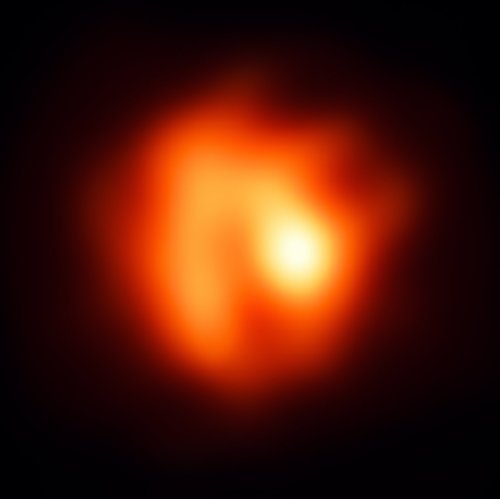#red giant

Day 2378
///
it might look better this way

Day 2377
///
you can practically hear it burning out

Day 2361
///
positionglitch
Kudos to MC SuperDuperNova (aka Jeff) for spotting that the planet in This Side of Paradise is orbiting Mira (aka Omicron Ceti). This is a really neat star, and also very weird.
Mira is about the same mass as the Sun and so would once have looked very similar, but it’s approaching the end of its life and has swollen up into a red giant. It’s not impossible for a red giant to host habitable planets, but it’s complicated. Back when it was a regular (what we call ‘main sequence’) star like the Sun, its habitable planet(s) would have been at around the same distance the Earth is from the Sun; this is where the temperature is exactly right to have liquid water. As the star swelled up, though, a planet at that distance would become far too hot (in fact, it might even be swallowed by the star), and you would need to be at about twice the distance of Pluto in order to be habitable.
As it happens, there was no life on Omicron Ceti III before the colonists in this episode arrived a few years ago, so it is entirely possible that this was once a frozen planet on the edge of a solar system that has only recently (in astronomical terms) become habitable. It’s juuuuust plausible for the star to have been at this stage for long enough for life to evolve, so the fact that there’s abundant plant life when the colonists show up just scrapes a pass.
So far, so good… but there’s more. Mira isn’t just a red giant, it pulsates. This means it grows brighter and dimmer with time, and it’s brightness changes by a factor of about 1,000. Each cycle is just under a year, so the colonists will have experienced several. That’s one hell of a seasonal variation!
Another complicating factor with Mira is that it has a companion star. Its companion is a white dwarf, the hot core left over after the outer layers of a red giant evaporate into space. That white dwarf companion (known as Mira B) is a little closer to the star than the planet needs to be, which raises questions about how stable the orbit of the planet can be. Mira B is also stealing material from the red giant: you can see this in the top left image, which was taken with the x-ray telescope Chandra (the artist’s illustration on the top right shows what we think is going on).
And it gets even weirder! Mira is zooming through space at almost 300,000 miles per hour. That’s not a problem (the planets would be moving at the same rate), but as it zooms along it’s leaving a tail of its outer atmosphere that’s visible in ultraviolet light and stretches for around 13,000 light years. The lower image shows this tail as seen by GALEX, a space telescope that observes ultraviolet light, in 2007.
Overall, I’m unconvinced this star would host a habitable planet, let alone one that could be described as “paradise.” But if you’re looking for somewhere to put a super-weird planet that suffers from mysterious “Berthold rays”? Sure, why not.
Post link

Betelgeuse Imagined
Why is Betelgeuse fading? No one knows. Betelgeuse, one of the brightest and most recognized stars in the night sky, is only half as bright as it used to be only five months ago. Such variability is likely just normal behavior for this famously variable supergiant, but the recent dimming has rekindled discussion on how long it may be before Betelgeuse does go supernova. Known for its red color, Betelgeuse is one of the few stars to be resolved by modern telescopes, although only barely. The featured artist’s illustration imagines how Betelgeuse might look up close. Betelgeuse is thought to have a complex and tumultuous surface that frequently throws impressive flares. Were it to replace the Sun (not recommended), its surface would extend out near the orbit of Jupiter, while gas plumes would bubble out past Neptune. Since Betelgeuse is about 700 light years away, its eventual supernova will not endanger life on Earth even though its brightness may rival that of a full Moon. Astronomers – both amateur and professional – will surely continue to monitor Betelgeuse as this new decade unfolds.
For image credit and copyright guidance, please visit the image website https://apod.nasa.gov/apod/ap200101.html
Time And Space



